
Hue University Journal of Science: Social Sciences and Humanities
ISSN 2588-1213
Vol. 133, No. 6B, 2024, p.p. 81–94, DOI: 10.26459/hueunijssh.v133i6B.7405
ON THE RECEPTION AND DEVELOPMENT OF THE ZHUZI
SCHOOL IN KOREA DURING THE MEDIEVAL AND EARLY
MODERN PERIODS: AN UNDERSTANDING OF ZHU XI
THROUGH SEONGNIHAK
Duong Xuan Ngoc Ha
University of Social Sciences and Humanities, Vietnam National University, Hanoi, Vietnam
Nguyen Viet Phuong *
College of Sciences, Hue University, 77 Nguyen Hue Str, Hue, Vietnam
Nguyen Ha Thu
University of Languages and International Studies, Vietnam National University, Hanoi,
Vietnam
* Correspondence to Nguyen Viet Phuong< nguyenvietphuong@hueuni.edu.vn>
(Received: January 05, 2024; Accepted: February 19, 2024)
Abstract. The Zhuzi School (The Cheng-Zhu School),a Confucian movement,emerged and flourished in
China during the Song Dynasty. This intellectual movement strengthened the official position of
Confucianism in the history of Chinese philosophy and spreading its influence to East Asian countries. In
the open atmosphere of Sinology at that time, the scholarly spirit of great master Zhu Xi was absorbed,
interpreted, and flexibly applied by indigenous Confucians in the regional countries according to their
ideological identity. In this paper, the authors have based on the methodologies of historical materialism
and diffusionism, as well as research methods such as comparison, analysis and synthesis, logic and
history, abstraction and generalization. These research methods are appropriately applied to analyze and
explain how the original Zhuzi School was received, developed, and localized into the so-called
Seongnihak in Korea during the medieval and early modern periods. The results of this study prove that
from the perspective of East Asian civilization, Neo-Confucianism is not One but Many.
Keywords. Neo-Confucianism, The Zhuzi School, Korean Seongnihak, Zhu Xi, Li-Qi

Nguyen Viet Phuong et al Vol. 133, No. 6B, 202
4
82
Introduction
The Zhuzi School朱子學is a philosophical trend within Song Confucianism that
originated in the late Tang and early Song period, initiated by the Five Sages of Northern Song
北宋五子1. This trend later reached its full development during the Southern Song Dynasty. The
Zhuzi School holds a significant position in the history of Chinese Confucianism due to its solid
metaphysical foundation. The term “the Zhuzi School” is associated with Zhu Xi朱熹(1130-
1200)2, who developed, refined, and perfected Confucianism theoretically and elevated it to
become the bureaucratic ideology of Chinese feudalism.
The primary interest of the Zhuzi School and Song Confucianism is to establish a solid
metaphysical foundation as a theoretical basis for interpreting socio-political issues. Li理
(Principle) and Qi氣 (Material Force or Vital Energy) are the two most crucial philosophical
categories for explaining the world. Li reflects consciousness (attributes of principle) and is the
source of all things, while Qi refers to matter, is regulated, and is relatively independent of Li.
Based on the foundations of Li and Qi, the Zhuzi School further developed other related
categories, such as Xin心 (Heart-Mind), Xing性 (Human Nature), and Qing情 (Emotion), to
discuss a priori ethics. The Zhuzi School constructed a pantheistic world model, arguing that
only one Li (Principle) manifested in everything. Li within a human being is called Xing (Xing-
Li), which is disturbed by the Qi that forms the essence of man. Therefore, realizing and
reaching the realm of Li requires each individual to cultivate morality restlessly.
Along with the Zhuzi School, Song Confucianism also had another intellectual movement
called the Lu Wang School陸王心學 (Learning of the Heart-Mind) initiated by Lu Jiuyuan陸九淵
(1139-1193), then further developed and perfected by Wang Yangming王陽明(1472-1528). The
Learning of the Heart-Mind advocates establishing a philosophical foundation on the fusion of
Li and Qi within the ego. These two schools (The Zhuzi School and The Lu-Wang School) have
attacked and competed with each other throughout the history of Confucianism. However, in
1 Five famous thinkers of the Zhuzi School during the Northern Song Dynasty: Zhou Dunyi周敦頤 (1017-1073), Shao
Kangjie邵康節(1011-1071), Zhang Hengqu張橫渠(1020-1077), Cheng Hao程顥(1032-1085)and Cheng Yi程頤(1033-
1108).
2 Zhu Xi was a great master of the Southern Song Dynasty in China. He attempted to inherit the philosophical spirit of
The Five Sages of Northern Song, integrating various currents of thought, thereby initiating a new philosophy called
Neo-Confucianism in order to restore the earlier rupture of the Confucian tradition, as well as shaping the
ideological pattern for later dynasties. Zhu Xi's famous works include Sishu zhangju jizhu四書章句集注(Collected
Commentaries on the Chapters and Sentences of the Four Books), The Zhuzi yulei朱子語類(A Collection of
Conversations of Master Zhu), Zhu Wen gong wen ji朱文公文集(Zhu Xi's Collected Writings),... Subsequent Confucian
generations reverently called him Zhuzi朱子(Master Zhu), proving his status was not inferior to Confucian masters
such as Confucius and Mencius.

Jos.hueuni.edu.vn
Vol. 132, No. 6B, 2023
83
terms of status and influence, the Zhuzi School is superior to the Lu-Wang School. The
influence of the Zhuzi School is not only within mainland China but also spreads in various
forms in East Asian countries.
Korea is a country imbued with Confucian culture. The cultural exchange and
acculturation brought the Zhuzi School to “set foot” on this East Asian peninsula. By selective
acquisition, Korean Confucians had unique, indigenous interpretations of Zhu Xi’s philosophy.
This study focuses on the reception and development of the Zhuzi School in Korea, thereby
clarifying a cultural commonality among countries with the same Confucian tradition.
1. Korean Confucianism in the pre-Zhu Xi period
The study of the Zhuzi School in an East Asian context aims to position this doctrine in a
broader perspective (namely, the vision of East Asian civilization) rather than being “limited” to
an original Zhu Xi of the Song-Ming period. On the Korean peninsula, it could be studies of
Zhu Xi or attempts to position it in the history of Korean philosophy. In addition, the Sino-
Korean comparison is also an essential point of view that we can discuss here. In this section,
the authors approach the Zhuzi School by capturing its spirit in the companionship of Korean
and East Asian3 Confucianism. Thereby initially outlining an indigenous Confucian
philosophical consciousness in a regional context.
In Korea, the term “Seongnihak”성리학(性理學, The School of Human Nature and
Principle)is more commonly used than “the Zhuzi School”4. In essence, both are general
concepts referring to Zhu Xi's thought, but Korean Confucians paid particular attention to
human morality (Xing Li) rather than purely metaphysical issues (Li Qi). We need to remember
that before Zhu Xi sowed his influence on Korea (thirteenth century), Confucianism with the
Confucius-Meng tradition and Han-Tang spirit established a relatively solid foundation in the
structure of the Samgyohabil삼교합일(三教合一, Three Teachings are of the same source)on this
East Asian peninsula.
Samguk Sagi 삼국사기(三國史記, History of the Three Kingdoms), one of the earliest
written history books in Korea, calls philosophy by a strange term Punglyu풍류/
3 The term “East Asia” here is considered from an intellectual-cultural perspective.
4 In this study, when discussing the influence of Neo-Confucianism in Korea, we carefully considered using the term
“Seongnihak” instead of the term “the Zhuzi School” in order to emphasize the specificity of Korean Confucianism.

Nguyen Viet Phuong et al Vol. 133, No. 6B, 202
4
84
Fengliu風流(literally meaning: Romantic)5. Confucianism began to be introduced into the
Korean peninsula during the Three Kingdoms period and significantly influenced on Goguryeo.
During his reign, Sosurim Wang소수림왕 (小獸林王, 371-384), the king of Goguryeo, built
Taehak/taixue (太學, Imperial Academy) and Gyeongdang/Jiongtang(扃堂, The private school
focuses on teaching reading and archery skills)to teach the sage-learning [6]. It can be seen as
the first sign of the presence of Confucianism in Korea.
A normative characteristic in the internal development of Chinese Confucianism is that it
derives from the widespread influence of humanism and prosperous and chaotic views in the
early stages (Pre-Qin Confucianism), then shifts to a dogmatic and non-practical learning style
mixed with mystical elements (Han-Tang Confucianism), followed by the search for
metaphysical foundations (Song Confucianism/Neo-Confucianism), and embark on the path of
East-West cultural continuation in the pre-modern period (modern Neo-Confucianism). The
development of Korean Confucianism followed the same trajectory. Throughout the Three
Kingdoms period on the Korean peninsula, there was a proliferation of Confucian prosperous
and chaotic texts, including the Analects論語 and Mencius孟子 developed in Baekje, and Spring
and Autumn Annals 春秋 in Silla [6, pp. 638-646]. At that time, Korean feudal powers gradually
considered Confucianism the theoretical basis for establishing a monarchical political model. At
the same time, the mastery of the classics and the profound erudition of history as the hallmarks
of Han-Tang scholarship also manifested through the exchange of classics by doctors at that
time, of which Wang In왕인 (王仁, ?-?) of Baekje is one of the most typical cases6.
Korean Confucianism in the pre-Zhu Xi period is still relatively simple. Although the
period from the unification of Silla to the Goryeo Dynasty witnessed “the historical period in
which Confucius was deified” [11, p. 102], the philosophical issues raised at that time are
modest. Only in the late Goryeo and the early Joseon period did philosophical Korean
Confucianism gradually emerge since Korean scholars embraced Zhu Xi’s ideas.
5 Samguk sagi: Silla benji, Vol 4 section wrote: 「國有玄妙之道,曰風流。設教之源,備詳仙史,實乃包含三教」[2].
Roughly translated: “An inherently magical Dao exists in our country, named romantic. Earlier history books have
discussed its origins, which contained the three religions within it”.
6 A scholar of Baekje brought books such as Analects, The Classic of Filial Piety孝經, and Thousand Character Classic千字文
to Japan during the reign of Emperor Ojin. The term doctor refers to a position or person of erudite knowledge in a
Confucian context.

Jos.hueuni.edu.vn
Vol. 132, No. 6B, 2023
85
2. The First Approaches to Zhu Xi’s Thought in Korea
The rise and fall of the kingdoms on the Korean peninsula during the pre-Choson period
has posed an urgent need for the ruling class to seek a solid ideology to consolidate its
legitimate position. In such circumstances, the conception of mingfen名分 (Normative status)
through the practice of classical Confucian humanism is insufficient to satisfy this requirement,
the root of which is the lack of metaphysical foundations. By combining the two aspects of qiong
li jin xing窮理盡性 (literally meaning “to develop one's nature to perfection through the
penetration of principle”) and da yi mingfen大義名分 (literally meaning “The great significance
of the social divisions and social roles”) [10, p. 193], Korean scholars embraced, absorbed, and
interpreted Zhu Xi to create an indigenous philosophy that concentrated on issues of Xing and
Li so much that it was considered “the second highest peak after the original Zhu Xi” [14, p.
141].
The Zhuzi School began to be introduced to the Korean peninsula in the early thirteenth
century and was associated with An Hyang 안향 (安珦, 1243-1306). In 1290, he accompanied
King Chungyol (忠烈王, 1274-1308) on a royal trip to the Yuan dynasty, where he met Chinese
Neo-Confucian scholars. At that time, Zhu Xi's thoughts were so charismatic that An Hyang
believed he was the true heir of Confucius. Therefore, he “copied them by hand, drew [Chu
Hsi’s] likeness, and brought everything back home” [8, p. 17]. During this early period, scholars
from the two countries exchanged ideas and books. Among Zhu Xi's works, Sishu zhangju jizhu
(Collected Commentaries on the Chapters and Sentences of the Four Books) is the most famous
work that demonstrates his platform. If An Hyang was the one who marked Zhu Xi's authority
with Korean Confucianism, Gwon Bu권부 (權溥,1262-1346) contributed significantly to the
revision and dissemination of Zhu Xi's work throughout the East Asia peninsula. We believe
this is extremely important for the development of Korean Seongnihak because Zhu Xi's
scholarly spirit manifested through his Sishu zhangju jizhu. For a long time, the content of this
work became an essential factor in Confucian examinations – a clear expression of the Zhuzi
School’s bureaucratic status in feudal society.
In the early stages of Seongnihak, we quickly list prominent thinkers with various
stances, including U Tak우탁 (禹倬,1263-1342), Yi Jin이진 (李瑱, 1244-1321), Lee Cho-
nyon이조년 (李兆年, 1269-1343), Yi Saek이색 (李穡, 1328-1396), Jieong Dojeon정도전 (鄭道傳,
1342-1398), Gwon Geun권근 (權近, 1325-1409)… This diversity, on the one hand, has opened up
the promising future of Seongnihak in the development process in Korea, but on the other
hand, it also poses the dilemma of establishing a genealogy of the Confucian Daotong道統


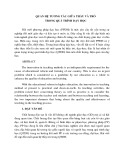
![Giáo trình Lịch sử giáo dục Việt Nam - ĐH Đà Lạt [Mới nhất/Chuẩn nhất]](https://cdn.tailieu.vn/images/document/thumbnail/2014/20140618/tichtutite/135x160/4181403077115.jpg)
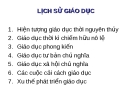
![Bài giảng Lịch sử Giáo dục [mới nhất]](https://cdn.tailieu.vn/images/document/thumbnail/2014/20140409/missminh32/135x160/6541397043119.jpg)


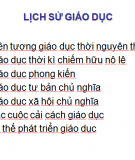
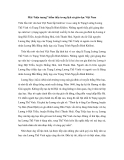
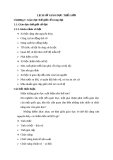




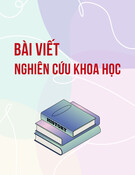
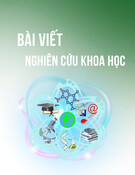

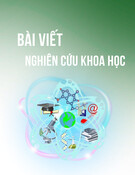


![Định hướng giáo dục STEM trong trường trung học: Tài liệu [chuẩn/mới nhất]](https://cdn.tailieu.vn/images/document/thumbnail/2025/20251124/dbui65015@gmail.com/135x160/25561764038505.jpg)




